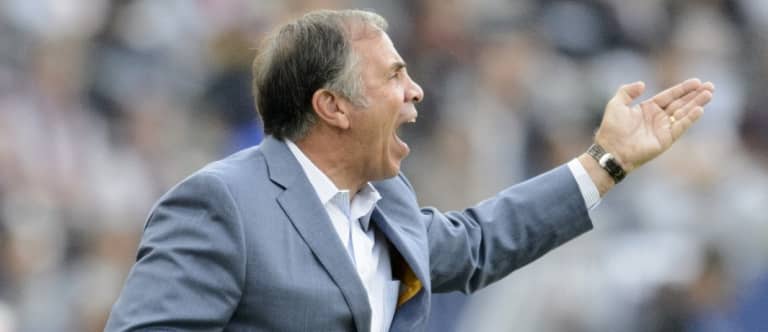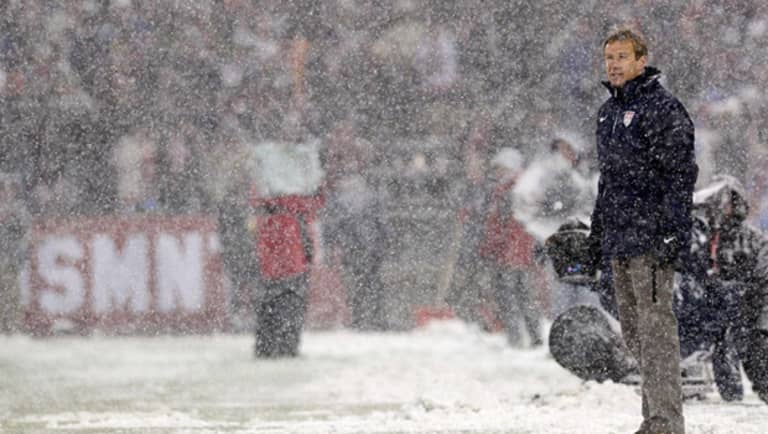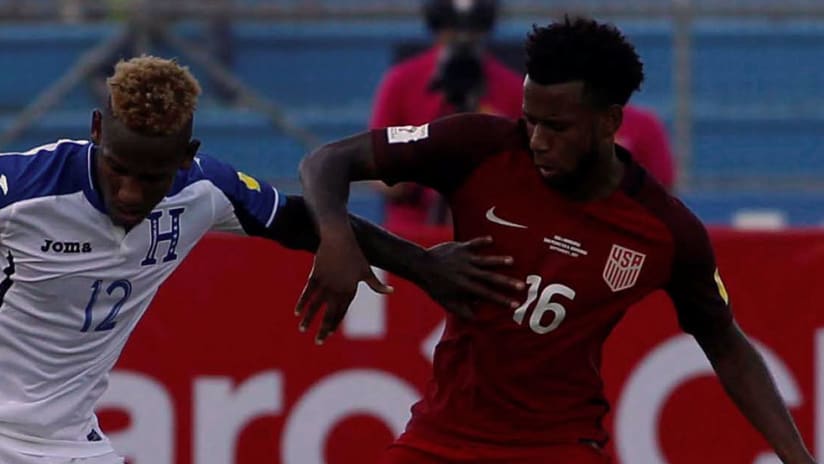As residents of The Great Land of Self-Improvement, millions of us here in the United States truly, deeply believe we can create our own reality – that it’s never too late to change. You can go to school, you can get a new job, you can get a new hairstyle, you can buy a gym membership and hit it hard every day.
But no matter where you’re at, you can’t change where you’re from.
This is an ancient truth of CONCACAF, the strange, sprawling North American soccer confederation that is the home of the US national team, and in all likelihood probably always will be.

Over the years, the USMNT and the U.S. Soccer Federation that sponsors it have spent many millions of dollars and countless hours in the pursuit of improvement. They lured the World Cup to these shores way back in 1994. They helped create MLS. They built an enormous coast-to-coast youth soccer competition (the Development Academy) for the express purpose of growing more and better players from the grassroots up.
They went to great lengths, over several years, to woo Jurgen Klinsmann and provide him everything he said he needed in the quest for a definitive, transformative leap forward on the global stage. And when that marriage went south down the stretch in 2015 and 2016, the federation’s leadership made the difficult, and costly, decision of a clean break in order to preserve the dream of the 2018 World Cup.
For all that, here we are again, drenched in sweat, nerves shattered, optimism battered after a close-run 1-1 draw with Honduras, a vitally necessary result if the US are to have any control over their fate when the CONCACAF Hexagonal concludes next month. And the warts and shortcomings of old are still around.
Los Catrachos tortured their heat-dazed visitors with speed, aggression and a primordial upwelling of collective will that cascaded down from the terraces of Estadio Olimpico Metropolitano and inspired the players on the field. The giants from the north were at their mercy again … only to wriggle out of the trap at the very last moment.
🇭🇳 GOOOOAAAAL: @RomellSamir strikes first, and #USMNT will have to wake up from an early nightmare! #USAvHON#WCQ2018pic.twitter.com/cIvRMugIU2
— beIN SPORTS USA (@beINSPORTSUSA) September 5, 2017
It was the result Bruce Arena’s side needed, but nowhere near the performance we expected, or should expect. They will probably have enough left in the tank to drag themselves over the finish line and book their tickets to Russia, assuming (perhaps prematurely) that this qualification campaign has sprung every disastrous surprise up its sleeve.
🇺🇸GOOOAAAAL: It's a mess, but @BobbyS_Wood to the rescue for #USMNT! #USAvHONpic.twitter.com/FbtF4b6ToS
— beIN SPORTS USA (@beINSPORTSUSA) September 5, 2017
The last time the US visited San Pedro Sula for a qualifier, in 2013, they lost 2-1 and turned in a performance so dispiriting that it sparked a firestorm of criticism and doubt both outside and inside the locker room. A few days later they found a way to beat Costa Rica in a Colorado snowstorm and from there, powered on to the best calendar year in the program’s history.
We told ourselves that would be the new normal, that it was finally time to join the planet’s elite teams – to launch ourselves into the top 10 world powerhouses, and stay there. As it turns out, the past few qualifiers have given us just as much reason to see 2013 as one more high point on the sine wave, a false dawn since forgotten as the USMNT scratch and claw just to survive the current Hex.
By now, most readers know that in modern parlance, CONCACAF is no longer a mere geopolitical entity. It’s also become both an adjective (“that game sure was CONCACAFy”) and a verb (“Honduras got CONCACAFed on Tuesday”). This region’s road to the World Cup invariably winds through hills, valleys, tropical heat waves and frozen tundra, from downpours to snowstorms to remote islands and who knows where else?

Other soccer nations around the world may look at CONCACAF qualifying and chuckle at our travails given the low FIFA rankings and shallow player pools of some of the region's members. But even the likes of Germany and England might find a trap or two waiting for them in San Pedro Sula and other such destinations.
No matter where the USMNT go or how big they dream, they can’t seem to escape the jumanji vines of CONCACAF – nor can Mexico, for that matter. As confidently as El Tri have cruised through this Hex, booking their World Cup berth with three games to spare, many of their fans still can’t wash the memory of the last World Cup qualifying cycle which required a San Zusi miracle and a playoff against New Zealand.
There's just nothing quite like CONCACAF competition anywhere in the soccer world – equally humbling and compelling in its unpredictability.














